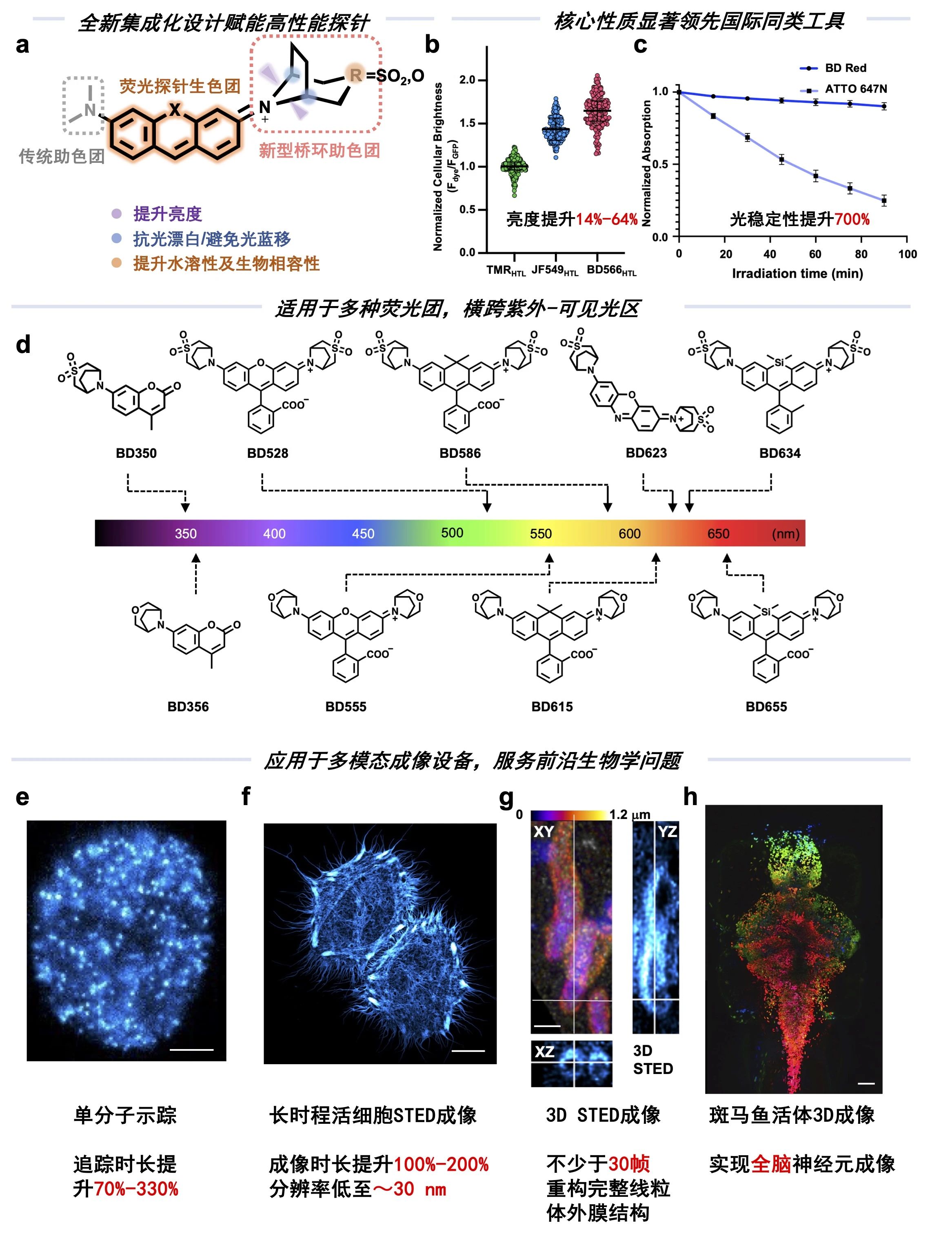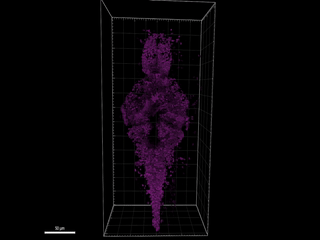A palette of bridged bicycle-strengthened fluorophores
Published in Nature Methods, 2025
Junwei Zhang, Kecheng Zhang, Kui Wang, Bo Wang, Siyan Zhu, Hongping Qian, Yumiao Ma, Mengling Zhang, Tianyan Liu, Peng Chen, Yuan Shen, Yunzhe Fu, Shilin Fang, Xinxin Zhang, Peng Zou, Wulan Deng, Yu Mu & Zhixing Chen✉
Abstract
Organic fluorophores are the keystone of advanced biological imaging. The vast chemical space of fluorophores has been extensively explored in seek of molecules with ideal properties. However, within the current molecular constraints, there appears to be a trade-off between high brightness, robust photostability, and tunable biochemical properties. Herein we report a general strategy to systematically boost the performance of donor-acceptor-type fluorophores by leveraging SO2 and O-substituted azabicyclo[3.2.1] octane auxochromes. These bicyclic heterocycles give rise to a collection of ‘Bridged’ dyes (BD) spanning the UV and visible range with top-notch quantum efficiencies, enhanced water solubility, and tunable cell-permeability. Notably, these azabicyclic fluorophores showed remarkable photostability than its tetramethyl or azatidine analogue, at the same time completely resistant to oxidative photobluing rendered by the Bredt’s rule. Functionalized BD dyes are tailored for applications in single-molecule imaging, super-resolution imaging (STED and SIM) in fixed or live mammalian cells and plant cells, and live zebrafish imaging or chemigenetic voltage imaging. Synergizing with advanced imaging methods, the bridge bicycle dyes represent a versatile palette for biological researches.
Check out the orginal paper.
Slides


Z-stack confocal images and 3D reconstruction of a live zebrafish expressing elavl3:H2B-HT7 and labeled with BD566HTL
News & views
Highlighted by Chemical & Biomedical Imaging
Science Cast
iNature
BioMed科技
BioArt
北大科研
生命科学联合中心
北大成像生物医学
PDFs
A Palette of Bridged Bicycle-Strengthened Fluorophores
Supplementary Information
Video: Z-stack confocal images and 3D reconstruction of a live zebrafish expressing elavl3:H2B-HT7 and labeled with BD566HTL
